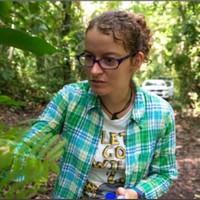
ProgramOur conference this year promises to be exceptionally rich and engaging, with a diverse programme of sessions. You will be able to attend plenary sessions, as well as shorter talks and video posters presentations. In addition to the scientific sessions, we are planning two or three workshops/roundtable sessions focusing on 'experimental planning', with a particular focus on the 4Rs, the impact of climate change on animal behaviour experiments, and how to communicate research results. While the full schedule will be revealed gradually over the next few weeks, we are delighted to share a sneak preview of our amazing plenary speakers lineup with you now. You will find the list below – stay tuned for more updates as the program takes shape.
***
Amir Patel Associate Professor, Department of Computer Science, University College London Studying Cheetahs Through The Lens of Robotics Abstract: Animals are extremely agile. However, we are still far from understanding exactly how they can manoeuvre so rapidly. This is crucial for understanding predator/prey interactions, in terms of the success (or failure) of hunts, the associated energetic costs and injury risks to animals. This understanding will enable a comprehensive view of locomotion, which has natural implications for biomechanics, ecology, evolutionary biology, and will be equally important to fast legged robots if they are to move at high-speed outside the safety of the laboratory. In this talk I will discuss my lab’s efforts towards the challenging problem of understanding the locomotion of the cheetah, the pinnacle of manoeuvrability. We do this by through the lens computing by developing a broad range of systems and techniques including multi-body modelling, feedback control, computer vision & deep learning, physical robots, as well as trajectory optimisation. In summary, our research on cheetah locomotion provides valuable insights into animal agility and has far-reaching implications for biomechanics, ecology, evolutionary biology, and the development of high-speed legged robots. ***
Anna Stöckl Junior Professor for Neuroethology, Konstanz University, Germany An insect’s view on flowers: from nectary guidance to pattern recognition Abstract: We have all encountered the fascinating variety of colourful patterns that flowers display in everyday life. While these may appear merely decorative to us, they can be of great importance to animals that visit flowers for their daily food supply. Visual patterns provide important cues for flower selection and guidance to nectar sources. In this presentation, I will share recent findings on the role of visual patterns in guiding the sensory-motor interactions of insect pollinators with flowers, highlighting both common strategies and group-specific adaptations across different insect taxa. I will also address a major open question in insect neuroethology: although numerous studies have demonstrated the impressive capacity of insects to recognise and even generalise complex visual patterns, the neural mechanisms that enable these abilities remain poorly understood. We are investigating this question using an unconventional model species, the hummingbird hawkmoth (Macroglossum stellatarum), which exhibits surprisingly complex innate pattern templates. These provide a foundation for algorithmic models of pattern recognition, offering a starting point to unravel how insects extract and utilise the critical visual information presented on floral surfaces to guide their foraging behaviour. ***
 Floria Mora-Kepfer Uy
Assistant Professor of Biology, Department of Biology, University of Rochester, NY, USA Parasites exploit plasticity to reprogram social wasps Abstract: While behavioral and physiological interactions are well-understood in many host-parasite systems, we still know little about the mechanisms underlying parasitic manipulation. Our research team takes advantage of the social wasp Polistes fuscatus that is infected by the twisted-wing insect Xenos peckii (Strepsiptera). This parasite has one of the most extreme sexual dimorphisms in animals, with males emerging as short-lived and free-flying adults while females retain larval traits and remain as obligate parasites. Both female and male parasites hinder cooperative behavior in their hosts and ovary development. However, only female parasites extend the lifespan of their host. First, we explore recognition mechanisms used in the arms race. Second, we are elucidating the neural and molecular mechanisms used to manipulate hosts. Our work aims to encover how parasites reprogram the phenotypic plasticity of their social hosts and the molecular mechanisms underlying their coevolutionary arms race.
***
 Sabrina Amador-Vargas
Research Biologist, Smithsonian Tropical Research Institute, Panama
Building nests among ants: are fungal rhizomorphs in bird nests ant deterrents? Abstract: Obligate mutualisms often involve the co-evolution of traits between species. These tightly linked relationships can create novel environments that attract other organisms, which may benefit from associating with the mutualists. As a result, obligate mutualisms can drive the evolution of specialized adaptations in other species, including strategies for living alongside or within these mutualistic systems. A striking example of obligate mutualism occurs between Pseudomyrmex ants and Central American acacias (Vachellia spp.). This partnership not only benefits the ant and the plant but also influences a variety of other organisms that associate closely with them. Some species have evolved a strong preference for living or nesting on acacias inhabited by these ants and have developed strategies to avoid ant detection. Several bird species—particularly tyrant flycatchers (Tyrannidae), wrens (Troglodytidae), and icterids (Icteridae)—preferentially nest in acacia trees. Some of these birds incorporate rhizomorphic fungal fibers into their nests. We investigated whether these fungal fibers help deter Pseudomyrmex spinicola ants from dismantling the early stages of bird nests. Additionally, we examined whether similar effects occur with other ant genera, including Ectatomma and Azteca. Using fungal rhizomorphs may represent an adaptive strategy for birds nesting near aggressive ant or wasp colonies, facilitating their specialization within the Vachellia–Pseudomyrmex mutualism.
***
 V.V. Binoy
Associate professor, National Institute of Advanced Studies (NIAS), Indian Institute of Science (IISc), Bangalore, India
Understanding the ‘Tiger of the River’: Abstract: Mahseers, a group of freshwater fishes that include many species growing above 30 kg in body size are facing the threat of extermination from their natural habitats. Out of the known 56 species 22 are found in India and plays vital roles in maintaining river health and ensuring livelihood for the local populations. Furthermore, recreational anglers from different continents visit India to fish for mahseers. To protect the existing natural populations, government and nongovernmental organisation are implementing various in situ and ex situ measures, including restocking with artificially propagated juveniles, for many decades. However, no noticeable changes has been observed in the populations of many mahseer species in the country. Although the knowledge of behaviour and cognitive abilities of the focal species as well as the behaviour and attitudes of various stakeholders, is vital for developing an effective framework for conservation, very little information on these aspects of any mahseer species is available in the literature. This presentation will share details of the studies conducted by my team on various behavioural traits of the hatchery reared juveniles of Deccan mahseer and the perceptions of various stakeholders involved in the conservation of these fishes. The implications of these findings for enhancing the efficacy of the programmes being implemented for the conservation of mahseers in India will also be discussed.
***
 Wen-Sung Chung
Postdoctoral research fellow, School of the Environment, Faculty of Science, University of Queensland, Australia
Inside Out: sexual dimorphism and neural plasticity shape the brain and behaviour in octopuses Abstract: Sexual dimorphism is common in animals where females and males differ in body size, sex-dependent characteristics and life history. Behavioural sexual dimorphisms, like courtship display or parental care, are often influenced by differences in the nervous system (e.g., mammals and birds). To date, sexual dimorphism among octopods is characterised by the male hectocotylus arm (the mating arm for the spermatophore transportation) and adult size differences, where the egg-bearing females are often significantly larger than males. Additional examples include mate guarding behaviour in the male Abdopus (algae octopus) and venom usage during copulation by the male Hapalochlaena (blue-ringed octopus). Apart from these renowned characteristics, knowledge about sexually dimorphism in the octopus brain remains largely incomplete. Notably, the octopus brain layout and neural network complexity were initially highlighted by Cajal and later JZ Young and colleagues in the last century. Recently, our work has sought to bring back to earth the thinking and hypotheses regarding the brains and behavioural boundaries of the octopuses. Leveraging advanced brain imaging developed by our team, it is now feasible to delineate the plasticity of octopus brains in both sexes throughout their lifespans. The male brain continuously grows, reaching its maximum size at the reproductive stage. Conversely, the female brain ceases to grow as the gonads develop, and then rapidly shrinks during reproduction. By assessing how the sex-biased neuroarchitecture changes in gross neuroanatomy and the associated neural networks, we shall recognise octopuses as a novel model for rethinking neural plasticity and their advanced cognitive capability. This gives a firm base to prompt a non-anthropomorphic interpretation of octopus comparative cognitive and behavioural abilities.
|



